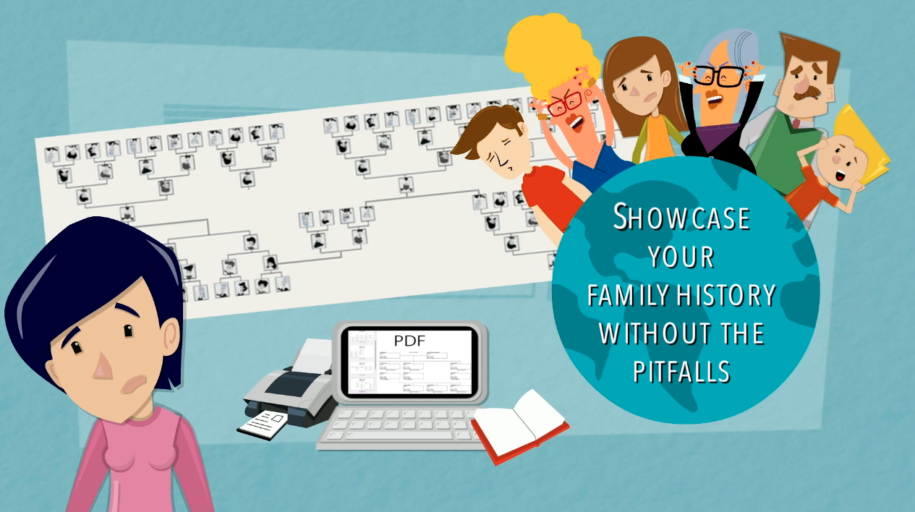- Don’t Lose Control of Your Family Photos
- Avoid Unsafe Sharing that Ruins Your Family History Data
- Fix Family Reunions That Never Happen
Don't Lose Control of Your Family Photos
The Problem
People don’t want to relinquish control of their old photos by uploading them to an online genealogy service. Lots of people want to manage their photos – store them on their own computer, sort them into relevant folders and back up those folders onto an external hard drive.
The Solution
Services like Dropbox let you do exactly that with the added benefit of automatically synchronising a (backup) copy of your photos to secure server computers on the internet. There are similar alternatives to Dropbox of course – this RootsTech article suggests using another example, Google Photos – A Genealogist’s Dream
The Benefit
With this approach you can obtain a unique web link to each folder and then add that link to your research (eg. for the relevant ancestor). Anyone you share your family history with can click / tap the link to open the folder and browse the photos on their own computer or handheld device.
Note: Clanview supports links like this to allow each recipient to open and view photos.
Avoid Unsafe Sharing that Ruins Your Family History Data
The Problem
So how do you find leads for lost ancestors? Sharing data is one way but this can be dangerous territory! Simply sharing your data (eg. as a GEDCOM file) can result in recipients corrupting your research with unverified changes. This “contamination” might also occur in other ways like allowing others to modify your family tree in your online research service.
The bigger challenge then becomes involving others who may not use the same research software as you – or may not use any software at all!
The Solution
Nowadays there are tools like Clanview that allow you to quickly publish your family history into a form that can be easily shared and distributed to your extended family or collaborators, but cannot be modified.
The Benefit
There’s nothing like involving others – and using Clanview to share a snapshot of your family history means your master data stays safe while still encouraging feedback. Not only can you learn about ancestors from relatives with older family members, but also collaborate with other researchers who may have a connection to your family tree.
Fix Family Reunions That Never Happen
The Problem
Family reunions are typically few and far between involving lots of challenges to agree on a date, arrange travel and involve distant relatives or far away family members. But why shouldn’t you be able to meet up more regularly, and even better, show others your latest family tree and ancestor discoveries?
The Solution
Today we are blessed with “instant messaging” technology that allows us to send messages directly to one or more people using tools like Skype, WhatsApp, Facebook Messenger and Viber. Creating a “family group” in one of these apps is a great way to share family history discoveries and knowledge about ancestors.
A tool like Clanview works well with this kind of instant message sharing. When you create (i.e. “publish”) a Clanview using a snapshot of your family history data, a unique web link is created for your family tree that can be shared with trusted recipients. Each family member can instantly open and explore your family tree on any device.
The Benefit
Share a Clanview link on your family group chat to allow everyone to explore your family tree interactively from their own individual perspective at the same time. Suddenly, something that would normally take months to organise across the tyranny of distance, can now be organised in no time and involve family no matter where they may live around the world.


Leave a Reply